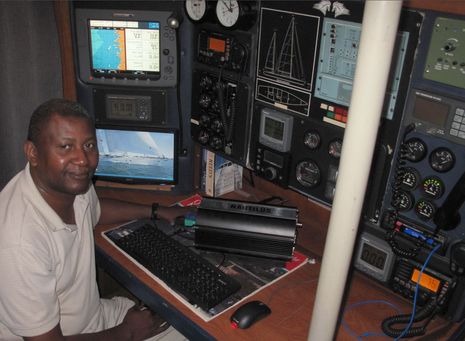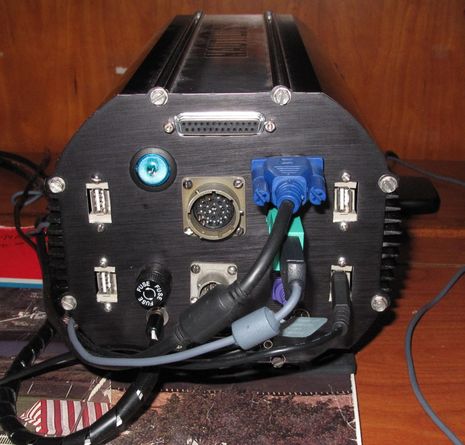RAPC Nautilus, toughest marine PC yet?

This is my favorite sort of show and tell. The guy doing the showing, Bob Hilliard, is the chief engineer involved, and the location was the nav station of the 105-foot ketch Apache, which will be a beta site for Bob's creation, the RAPC Nautilus marine PC on the chart table. I admit to being a bit dazzled by the boat, which you can gander in this old charter listing, and the Pinot Noir, but I'm thinking that's the most bullet-proof boat computer I've ever seen...
For one thing, that fanless, and purportedly waterproof, box contains its own UPS (uninterrupted power supply). Bob demonstrated by pulling the DC power supply; the demo monitoring and charting software running on the screen behind him kept on going for a minute or two, and then, along with Windows, shut itself down gracefully. Perhaps more remarkable are the dual processors at work in the Nautilus. Not just "dual core" -- though each processor could be, which would then yield "dual dual" -- but two parallel motherboards, which means that a whole internal computer could fail and your software would keep on keeping on. Nice, and maybe only possible because Nautilus doesn't have the sort of motherboards we're used to. Hilliard has both personal and business history with military technology, and RAPC designs are based on an "extreme environment" PC/104 hardware standard I had not heard of before. It's small, modular, and very low power.Now Nautilus is a "call for quote" level of computer, not inexpensive, but may be just the thing for big, PC-centric vessels. I'm hoping, in fact, that the young crew of Apache, soon to become an adventure charter operation, will let us know how the boat's systems work once they're rebuilt around Nautilus. I've also heard that a certain large marine electronics company is looking at an RAPC machine with NMEA 2000 built right in, and I might see it under their brand at the NMEA Conference next week. Cool.


 Share
Share
XP? are you kidding? is it made by B&G? XP is and ESL OS....